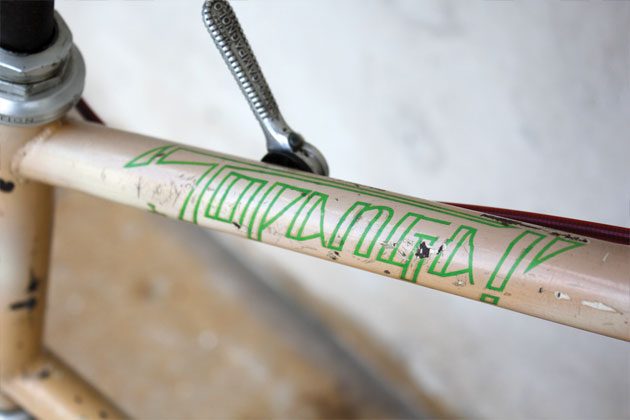Specialty Files: 1979 VVA ‘TOPANGA!’
Originally posted on November 17, 2016 at 1:01 am
Editor’s note: This story first appeared in Dirt Rag Issue #184, published in May 2015. Words and photos by Jeff Archer.
Early “klunker” mountain bikes were based on balloon-tired cruisers from the ’30s through the ’50s. Because of this, many of the parts used on these bikes were not really suited to the task. Cruiser rims were usually chrome-plated steel, which was not only heavy, but also didn’t work well with rim brakes. The best tires of the day, such as the Uniroyal Nobby, were just simple beach cruiser designs, and extremely heavy. When alloy rims and skinwall tires finally made the scene, six-plus pounds could be shaved off the wheelset alone.
But there was another possible option: BMX bikes in the late 1970s already used alloy rims and skinwall performance tires, plus the smaller-diameter rims were significantly lighter due to their size.

One bike builder who followed this path was Victor Vincente of America. VVA started life as Michael Hiltner, a U.S. national road champ and two-time Olympian in the ’60s. After completing the first known double-transcontinental ride in 1974, he deemed himself Victor Vincente of America, which translates to “winner/conqueror of America.” [Read our feature on VVA at this link.]
By 1978, VVA was captivated by the idea of riding his local California dirt roads; he wanted a machine better suited for off-roading, so he designed the ‘Topanga!’. It used 20 inch BMX-sized rims and tires; VVA dubbed it an “adult-sized, multi-geared mud duster.” The bike shown here is serial number 2, circa 1979, which pre-dates mountain bike componentry, so BMX-sourced parts were used for the brakes, handlebar, fork, stem and brake levers. The drivetrain consists of a 54-tooth single chainring, Suntour 7-speed freewheel, Suntour rear derailleur and a single Campagnolo road shifter mounted to the top tube.

Our sport’s pioneers had to make do with parts that were available to them at the time.
This bike can be seen at the Museum of Mountain Bike Art & Technology, which is housed at First Flight Bicycles in historic downtown Statesville, North Carolina. If you can’t visit in person, check out the collection at mombat.org.